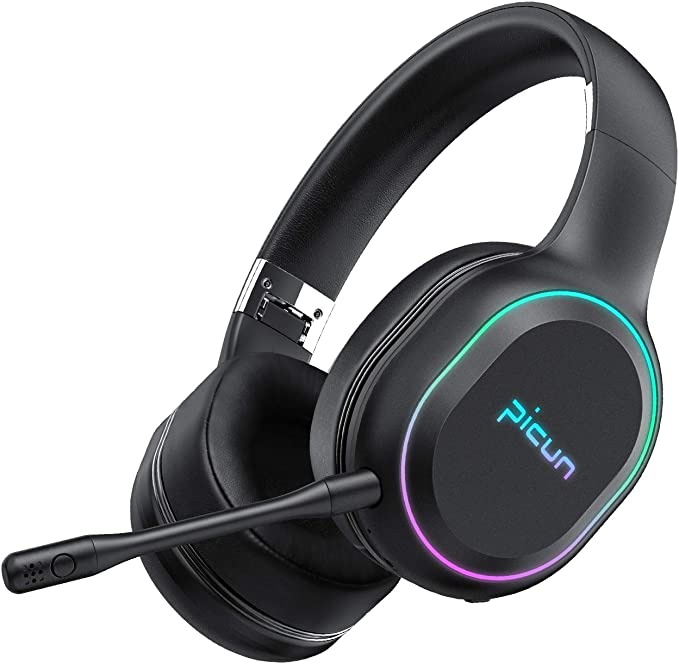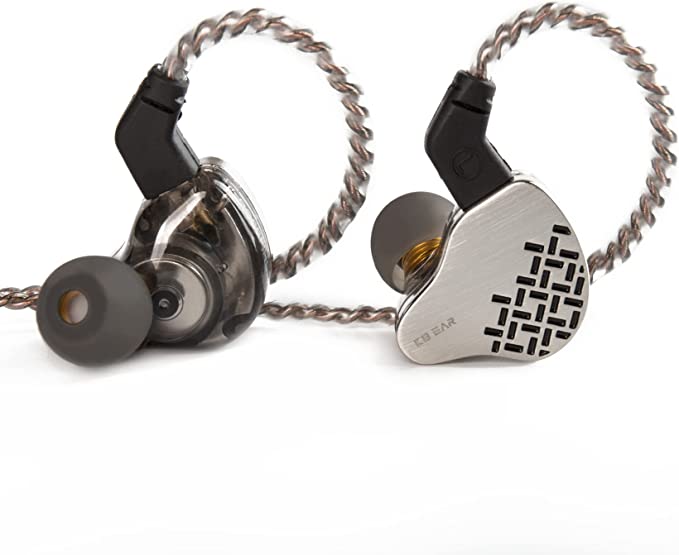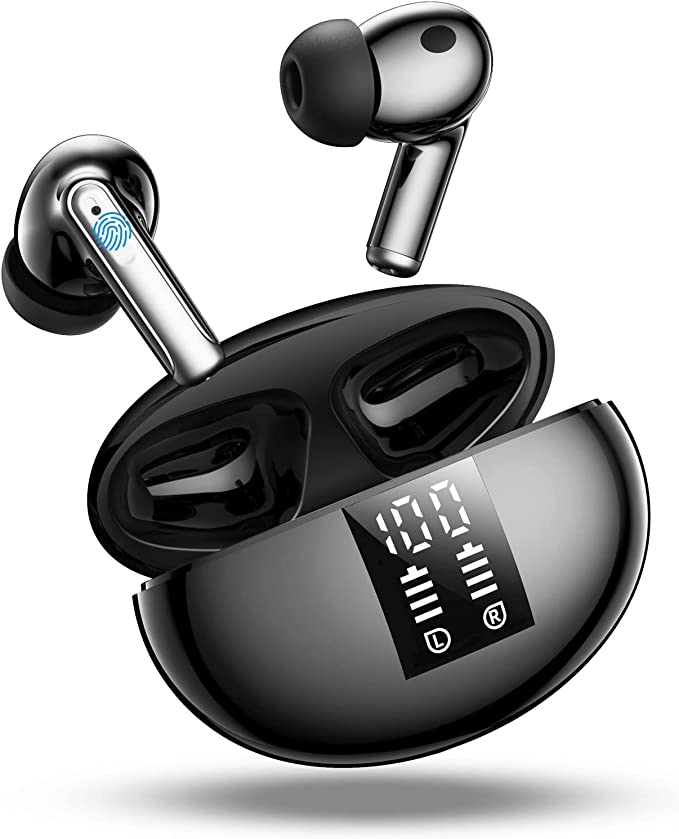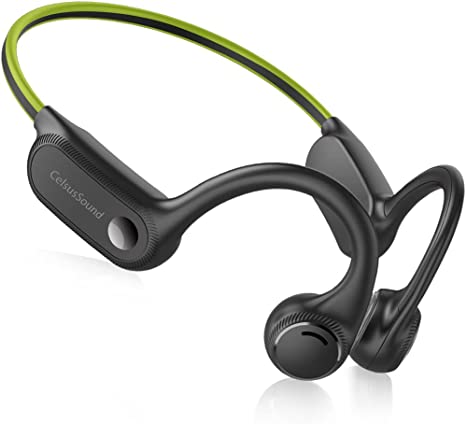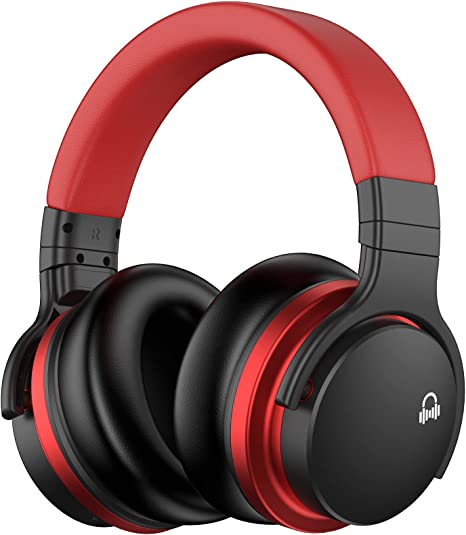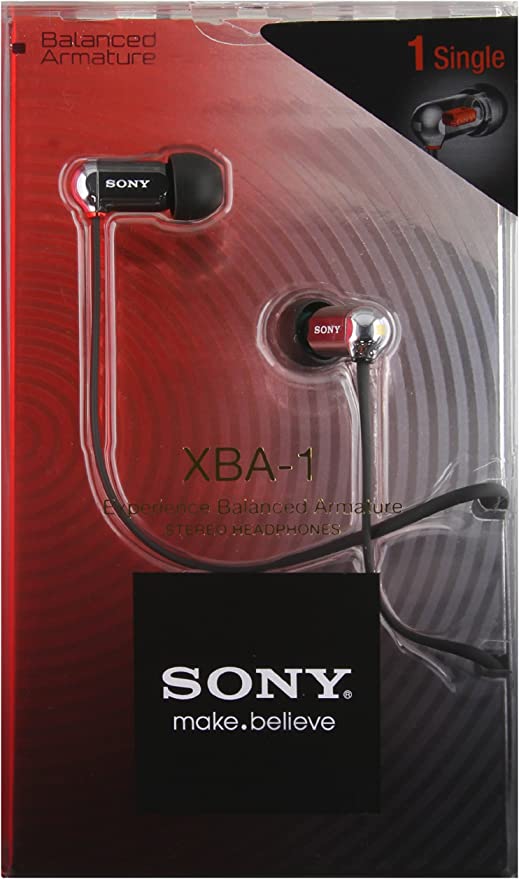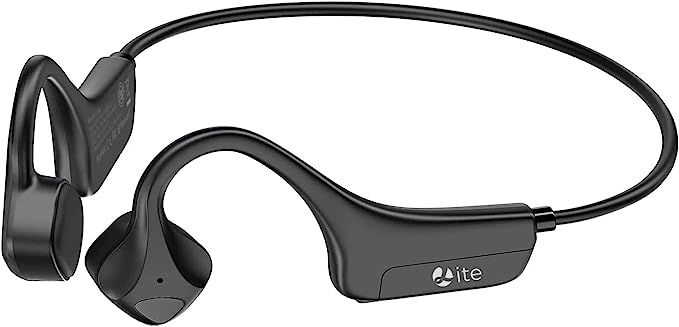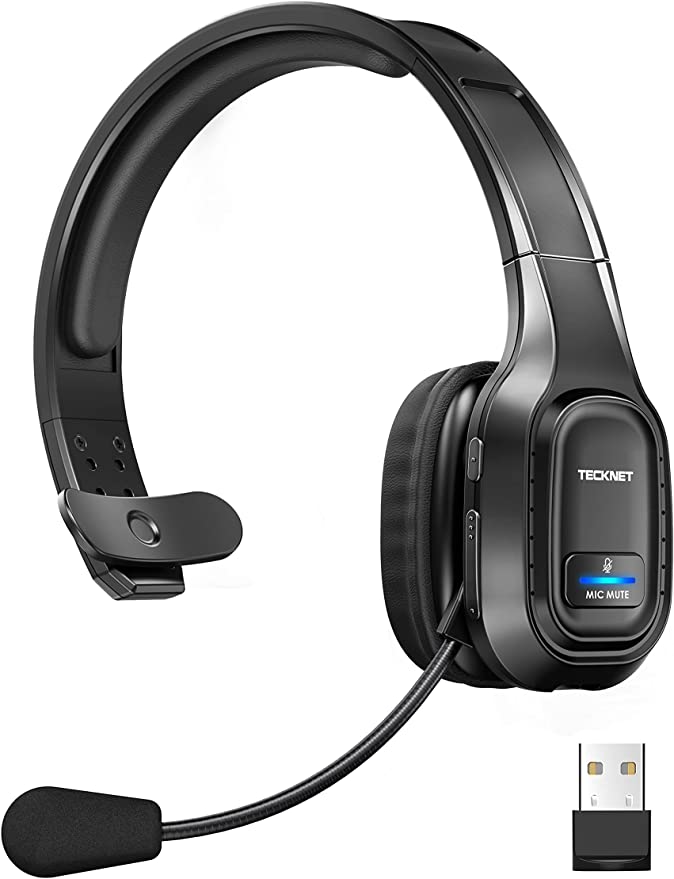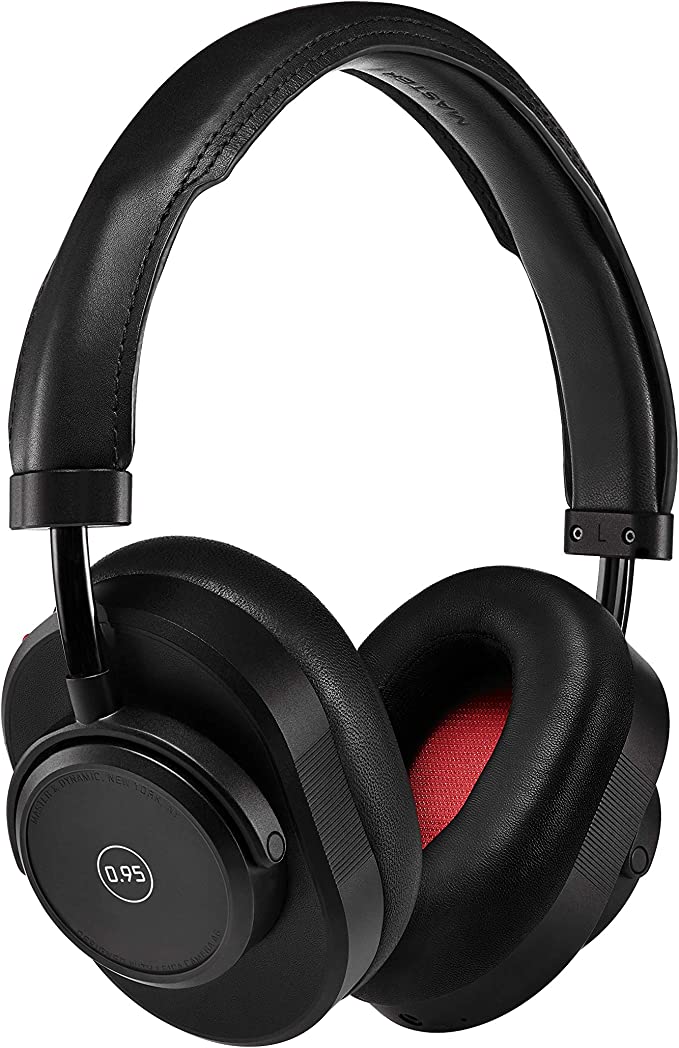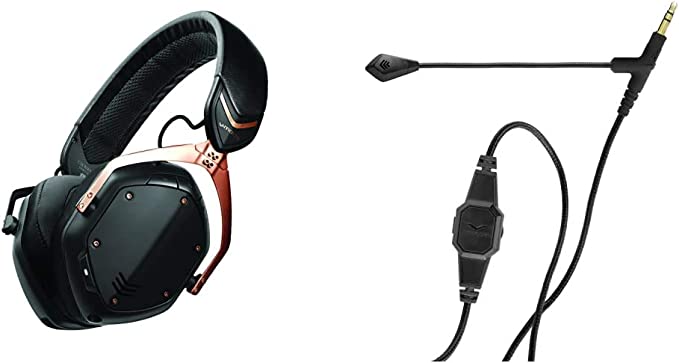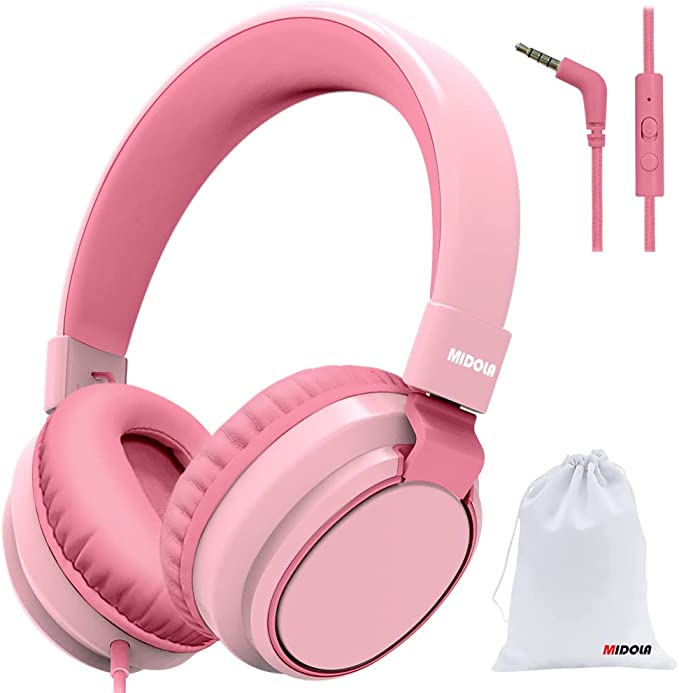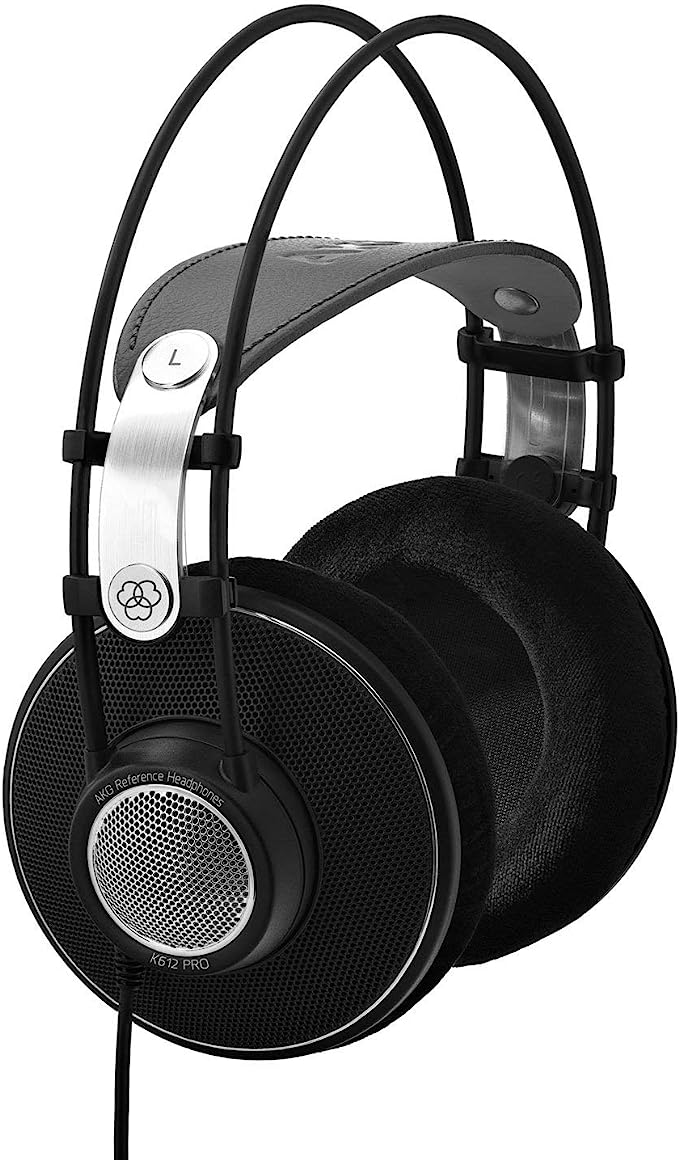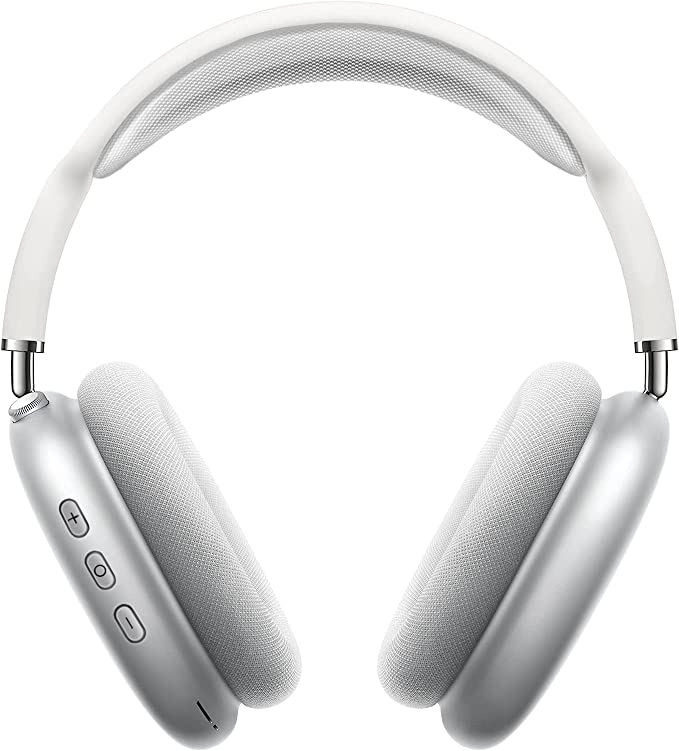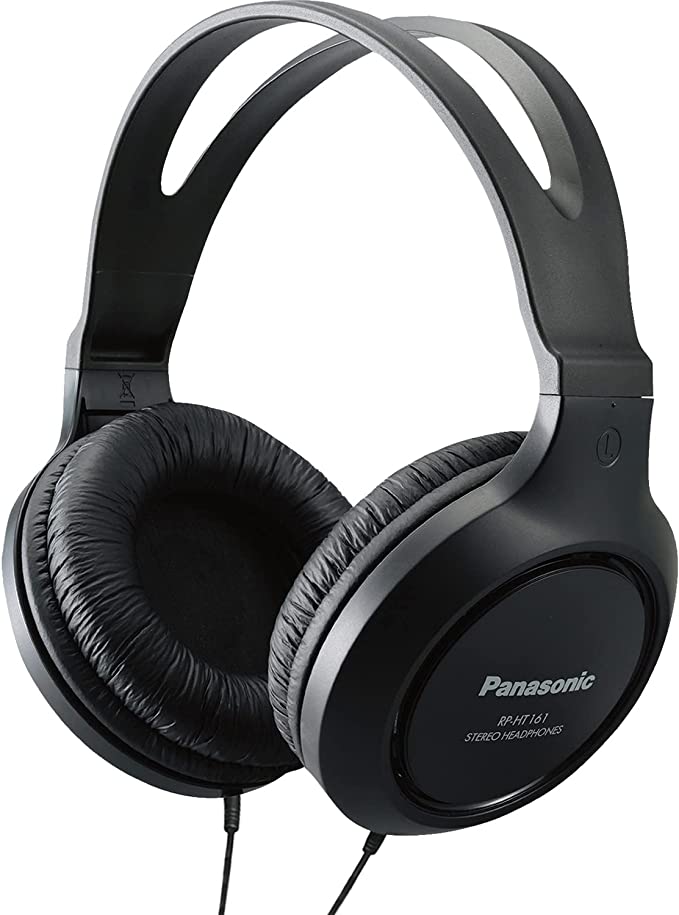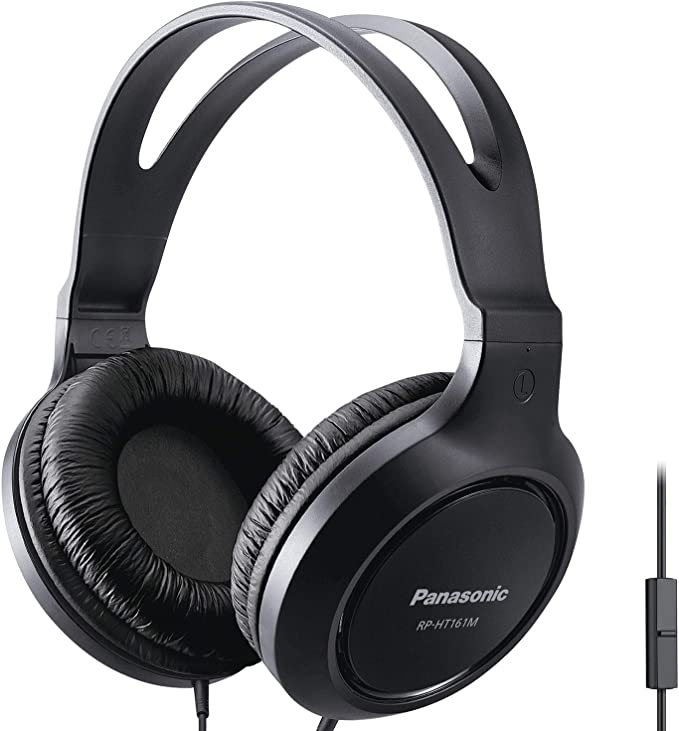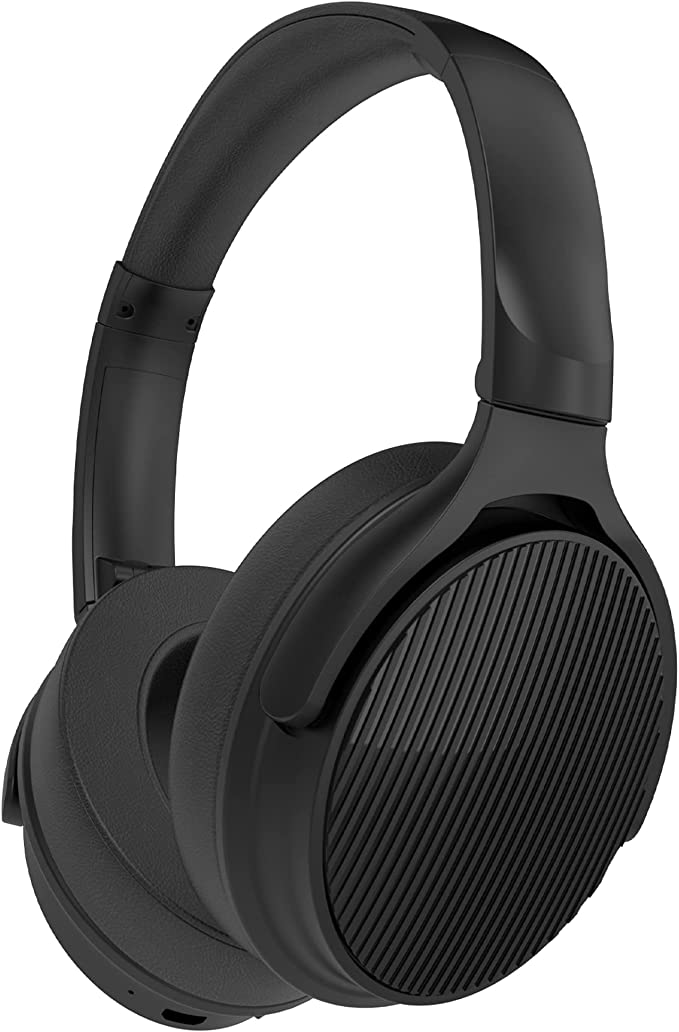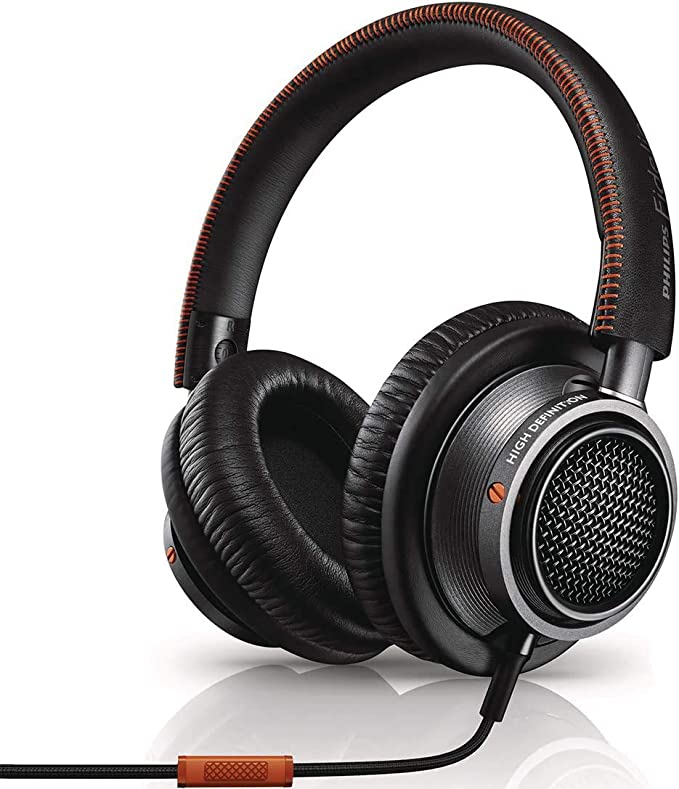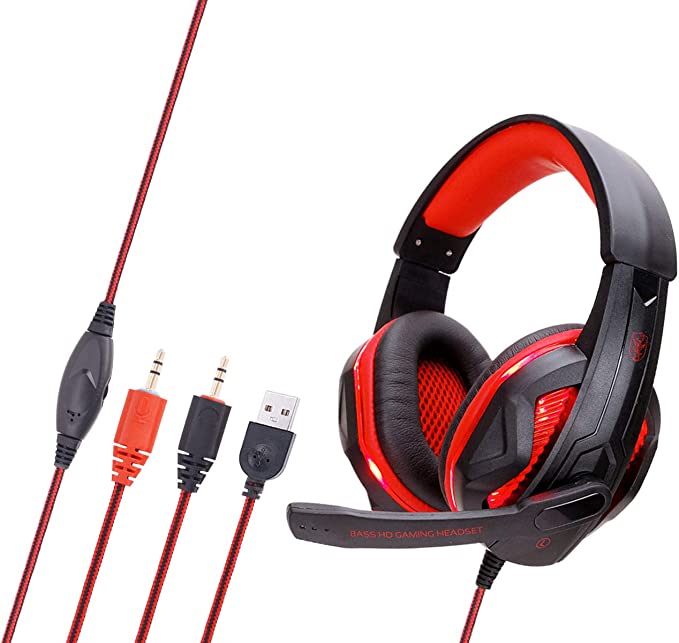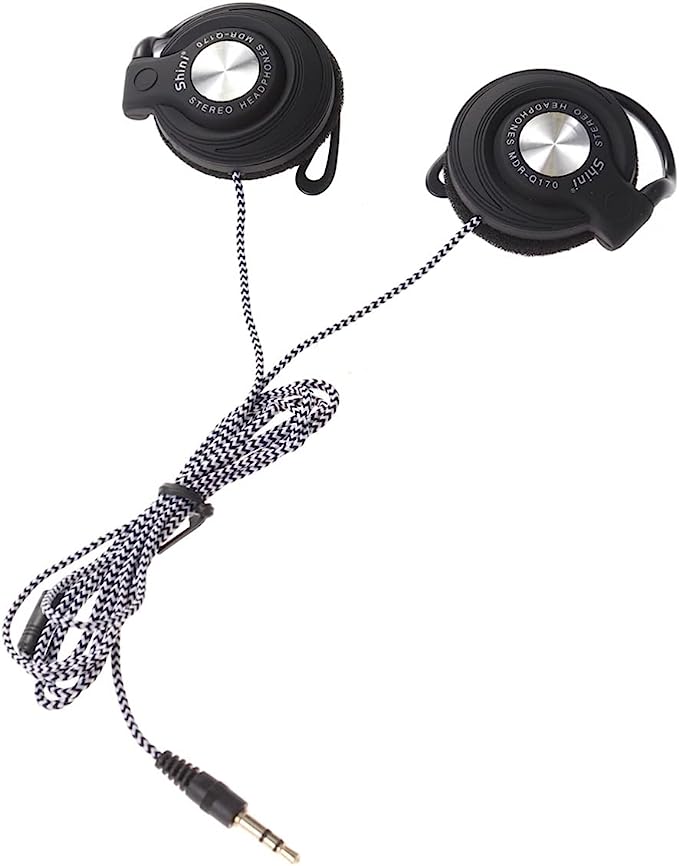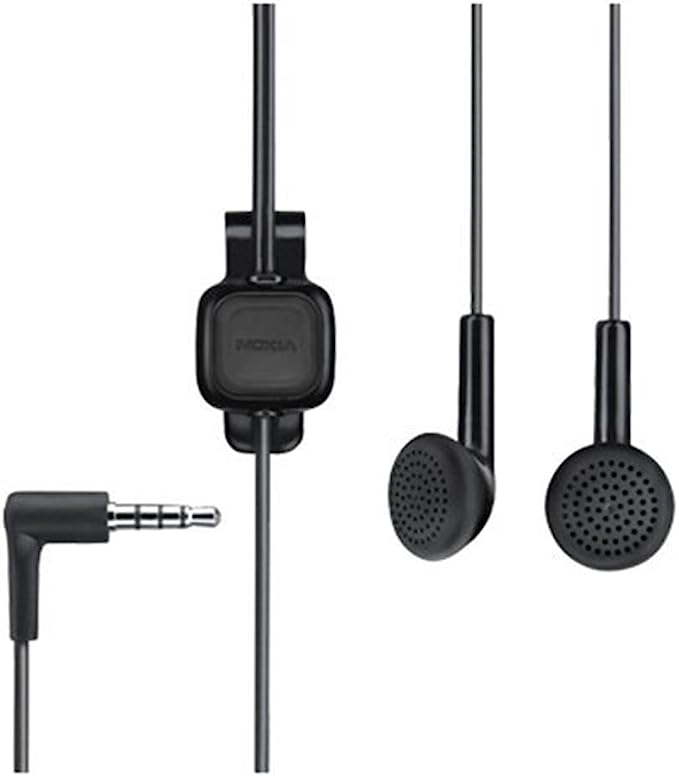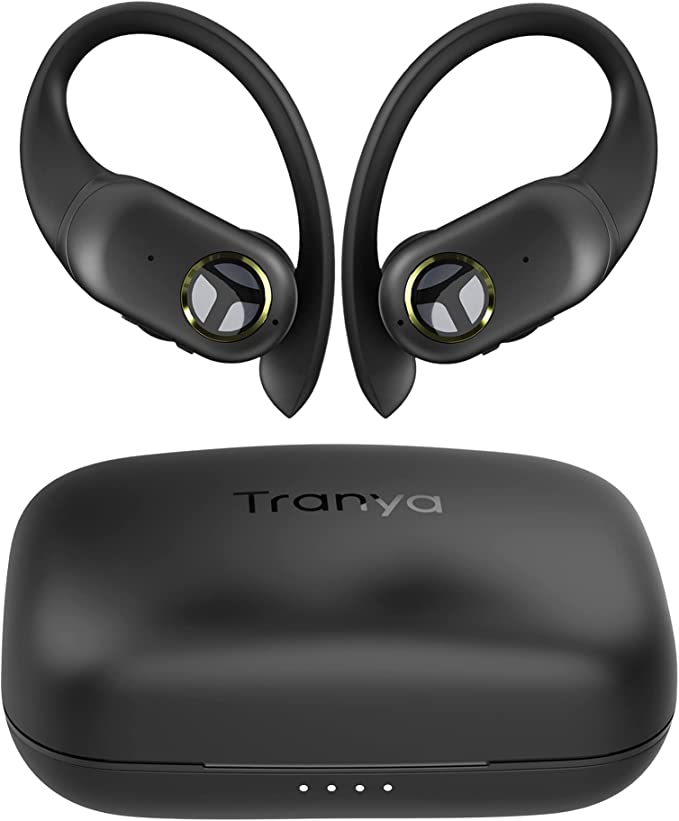Decoding Sound: Wired Headphone Technology and the FUOYLOO N4533400679
Update on Feb. 17, 2025, 2:54 p.m.
A Journey Through Sound: From Gramophones to Headphones
Our relationship with recorded sound has a rich history, beginning with the groundbreaking invention of the phonograph by Thomas Edison in 1877. This marvel of engineering, with its iconic horn, allowed people to capture and replay sound for the first time. Imagine the wonder of hearing a voice or music emerging from a machine! But the phonograph, while revolutionary, was a public experience. Headphones, in their earliest forms, offered a more personal way to listen.
Early headphones, developed in the late 19th and early 20th centuries, were far from the sleek devices we know today. Often used by telephone operators, they were heavy, cumbersome, and delivered relatively poor sound quality. Yet, they represented a significant shift: the ability to experience sound privately, immersing oneself in a world of audio without disturbing others. Over the decades, headphones evolved dramatically, driven by advancements in materials science, electronics, and our understanding of how we hear.

The Physics of Sound: Vibrations, Waves, and Your Ears
Before we dive into the inner workings of headphones, let’s take a step back and consider the fundamental nature of sound itself. What is sound, exactly? It’s all about vibrations.
Imagine dropping a pebble into a still pond. Ripples spread outward from the point of impact. Sound works in a similar way, but instead of water, the medium is usually air. When an object vibrates – whether it’s a guitar string, a drumhead, or the diaphragm in a headphone – it creates pressure waves in the air. These waves are alternating areas of high and low pressure, traveling outward from the source.
These pressure waves reach our ears, where a remarkable process of transduction takes place. The outer ear funnels the waves into the ear canal, causing the eardrum to vibrate. These vibrations are then transmitted through three tiny bones in the middle ear (the malleus, incus, and stapes) to the cochlea, a fluid-filled structure in the inner ear. Inside the cochlea, tiny hair cells convert the mechanical vibrations into electrical signals that are sent to the brain, where they are interpreted as sound.
Two key characteristics of these sound waves determine what we hear:
- Frequency: This refers to the number of vibrations per second, measured in Hertz (Hz). Higher frequency means more vibrations per second, which we perceive as a higher pitch. Think of the high-pitched chirp of a cricket versus the low rumble of thunder.
- Amplitude: This refers to the intensity or strength of the vibration, which we perceive as loudness. A larger amplitude means a more powerful sound wave.

Inside a Headphone: Deconstructing the Components
Now, let’s take a look inside a typical wired headphone, like the FUOYLOO N4533400679, to see how these principles are applied. The key components include:
- Drivers: These are the heart of the headphones, the miniature loudspeakers that convert electrical signals into sound waves. The FUOYLOO N4533400679 uses dynamic drivers, which we’ll explore in detail shortly.
- Earcups: These are the housings that enclose the drivers and fit over or on your ears. The FUOYLOO N4533400679 has over-ear earcups, meaning they completely surround the ear. The closed-back design of these earcups plays a crucial role in sound isolation.
- Headband: This is the band that connects the two earcups and holds the headphones on your head. An adjustable headband, like the one on the FUOYLOO N4533400679, helps ensure a comfortable fit.
- Cable: This transmits the electrical audio signal from your device (phone, computer, etc.) to the drivers. The FUOYLOO N4533400679 uses a standard 3.5mm audio jack for wide compatibility.
The Dynamic Driver: A Tiny Loudspeaker
The most common type of headphone driver is the dynamic driver, also known as a moving-coil driver. It works on the same basic principles as a full-sized loudspeaker, just miniaturized. Here’s how it works:
- Electrical Signal: An electrical audio signal from your device is sent to the headphone cable.
- Voice Coil: This signal travels to a small coil of wire (the voice coil) attached to a thin, flexible membrane called the diaphragm.
- Magnetic Field: The voice coil is positioned within a magnetic field created by a permanent magnet.
- Interaction: When the electrical signal passes through the voice coil, it creates its own fluctuating magnetic field. This field interacts with the permanent magnet’s field, causing the voice coil to move back and forth.
- Diaphragm Vibration: Because the voice coil is attached to the diaphragm, this movement causes the diaphragm to vibrate.
- Sound Waves: The vibrating diaphragm pushes and pulls on the surrounding air, creating pressure waves – sound waves – that travel to your ears.
The size of the driver often correlates with its ability to produce a wider range of frequencies and a more powerful sound. The FUOYLOO N4533400679 features 40mm drivers, which are relatively large for headphones, suggesting a good capacity for delivering a full and rich sound.
Impedance: The Power Behind the Sound
You’ll often see a specification called impedance listed for headphones, measured in ohms (Ω). What does this mean? Impedance is a measure of how much a circuit resists the flow of electrical current. In the context of headphones, it indicates how much power is needed to drive them effectively.
Here’s a simplified analogy: Imagine you’re pushing a swing. A swing with high impedance is like a very heavy swing – it requires more effort (more power) to get it moving. A swing with low impedance is like a lighter swing – it’s easier to push (requires less power).
Headphones with lower impedance (typically 16-32Ω) are generally easier to drive, meaning they can achieve a good listening volume even with low-power devices like smartphones and tablets. Headphones with higher impedance (e.g., 100Ω or more) often require a dedicated headphone amplifier to reach their full potential.
The FUOYLOO N4533400679 has an impedance of 32Ω. This makes it a good match for a wide range of devices, including smartphones, tablets, computers, and portable music players, without needing a separate amplifier.
Open vs. Closed: Choosing Your Listening Experience
Headphones come in two main design categories: open-back and closed-back. The choice between them significantly impacts the listening experience.
-
Open-Back Headphones: The earcups on open-back headphones have openings or vents that allow air (and sound) to pass through freely. This creates a more natural and spacious soundstage, often described as feeling more “airy” or “open.” However, the open design also means that sound leaks out, and external noise can easily penetrate, making them less suitable for noisy environments.
-
Closed-Back Headphones: The earcups on closed-back headphones are completely sealed, creating a barrier between the drivers and the outside world. This design offers several advantages:
- Noise Isolation: Closed-back headphones effectively block out external noise, allowing you to focus on your audio without distractions.
- Sound Leakage Prevention: They also prevent sound from leaking out, making them a good choice for private listening in shared spaces.
- Enhanced Bass Response: The sealed enclosure can often enhance the bass frequencies, providing a more impactful low-end response.
The FUOYLOO N4533400679 features a closed-back design. This makes it a good choice for gaming, commuting, or any situation where you want to minimize distractions and immerse yourself in the audio.

Frequency Response: The Sound Signature
Frequency response refers to the range of frequencies a headphone can reproduce, from the lowest bass notes to the highest treble notes. It’s typically represented as a graph showing the headphone’s output level (in decibels, dB) across the audible frequency spectrum (usually 20Hz to 20,000Hz).
An ideal frequency response would be perfectly “flat,” meaning the headphone reproduces all frequencies at the same level. In reality, most headphones have some variations in their frequency response, giving them a unique “sound signature.” Some headphones might emphasize bass frequencies, while others might have a brighter, more treble-focused sound.
Unfortunately, specific frequency response data for the FUOYLOO N4533400679 is not readily available. However, the 40mm drivers and closed-back design suggest a good potential for a balanced and full-range sound.

Comfort Matters: Ergonomics and Headphone Design
Even the best-sounding headphones won’t be enjoyable if they’re uncomfortable to wear. That’s where ergonomics comes in – the science of designing products to fit the human body comfortably and efficiently.
The FUOYLOO N4533400679 features an over-ear design, meaning the earcups completely surround the ears. This design, combined with the use of faux leather and plastic, aims to provide a comfortable fit for extended use. The adjustable headband further contributes to a customizable and secure fit. Over-ear designs, when well-executed, can distribute pressure more evenly around the ear, reducing fatigue compared to on-ear designs that press directly on the ear cartilage.

The Future of Sound: What’s Next for Headphones?
The world of headphones is constantly evolving. Here are some potential future trends:
- Wireless Technology: While the FUOYLOO N4533400679 is a wired headset, wireless technology continues to improve, with advancements in Bluetooth codecs offering higher-fidelity audio transmission.
- Active Noise Cancellation (ANC): ANC technology uses microphones and electronic processing to actively cancel out external noise, creating an even more immersive listening experience. While not a feature of the FUOYLOO N4533400679, it’s becoming increasingly common in headphones.
- Personalized Sound: Some headphones are beginning to incorporate features that tailor the sound to the individual listener’s hearing profile, compensating for variations in ear shape and sensitivity.
- Sustainable Materials: There’s a growing focus on using more environmentally friendly materials in headphone manufacturing.

Wrapping Up: The FUOYLOO N4533400679 and the Science of Listening
The FUOYLOO N4533400679 wired headset, while a relatively simple device, embodies many of the key principles of audio technology. From the dynamic drivers that convert electrical signals into sound waves to the closed-back design that isolates you from the outside world, it’s a testament to the ingenuity of engineers and the fascinating science of sound. By understanding how headphones work, we can appreciate not just the music or game audio they deliver, but also the intricate interplay of physics, engineering, and human perception that makes it all possible.
